Unmanned (All Services)
-
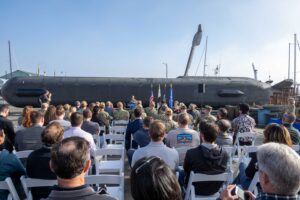 Unmanned Systems
Unmanned SystemsFirst Orca XLUUV Minelayer To Deliver This Summer, Navy Developing More Playloads
The Navy plans to receive the first Boeing [BA]-built Orca Extra Large Unmanned Undersea Vehicle (XLUUV) this summer, a Navy program office leader said this week. The first vessel, dubbed […]
Tagged in: -
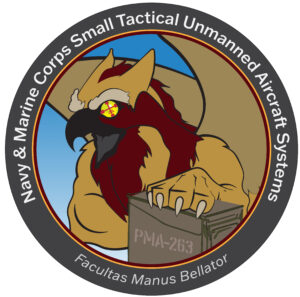 International
InternationalNavy Seeks Industry Help For Foreign Partner Long Range UAV
The Navy is seeking industry input on potential solutions for a long-range unmanned aircraft to be used by an unspecified partner country. The Request For Information (RFI), published Wednesday, specifically […]
Tagged in: -
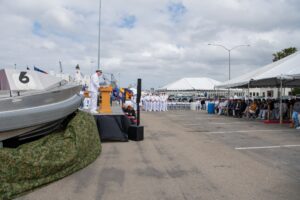 Navy/USMC
Navy/USMCNavy Establishes USV Squadron 7 For Small Vessels
The Navy established Unmanned Surface Vessel Squadron (USVRON) 7 on April 25 during a ceremony at Naval Base San Diego, operating under Commander of Naval Surface Force, U.S. Pacific Fleet […]
Tagged in: -
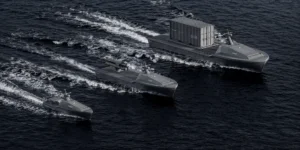 Unmanned Systems
Unmanned SystemsSaronic Adds Mirage And Cipher To Small Autonomous Surface Vessel Offerings
Autonomous surface vessel (ASV) developer Saronic said Wednesday it has created two new larger small unmanned surface vessel designs, boosting the range and cargo capacities of its small ASV offerings. […]
Tagged in: -
 Navy/USMC
Navy/USMCDIU Seeks Demonstrable Long-Range High-Capacity Payload UUVs
The Defense Innovation Unit (DIU) on Thursday launched a new Commercial Solutions Opening (CSO) initiative to find more uncrewed vessels that can demonstrably hold high-capacity payloads for extended ranges for […]
Tagged in: -
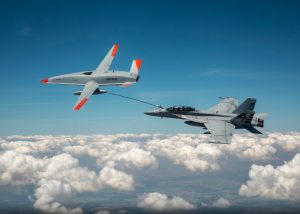 Navy/USMC
Navy/USMCNAVAIR Head Warns First MQ-25 Flight This Year Still Requires “A Ton Of Work”
NATIONAL HARBOR, Md. – The commander of Naval Air Systems Command (NAVAIR) this week warned a lot of work is still required with the new MQ-25 Stingray unmanned carrier-based tanker […]
Tagged in: -
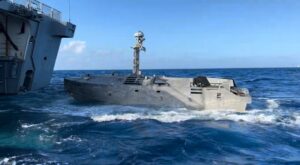 Navy/USMC
Navy/USMCBollinger Delivers First Three Counter-Mine Unmanned Surface Vehicles To Navy
Bollinger Shipyards recently delivered the first three Mine Countermeasures Unmanned Surface Vehicles (MCM USVs) to the Navy. The Navy plans to use the MCM USVs as a key part of […]
Tagged in: -
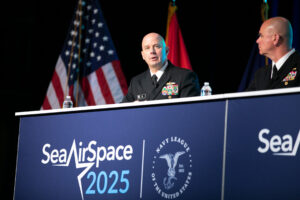 Navy/USMC
Navy/USMCNavy May Look To Retire Cruisers Under Budgetary Pressure
NATIONAL HARBOR, Md. – The Navy may consider retiring early or winding down Ticonderoga-class cruisers as the service faces budget pressure under a full-year continuing resolution (CR) and the continuing […]
Tagged in: -
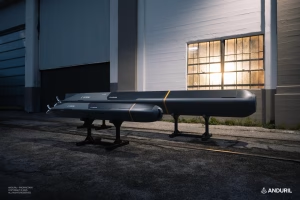 Navy/USMC
Navy/USMCAnduril Announces New Copperhead UUV, Includes Torpedo-Like Variant
NATIONAL HARBOR, Md. – Anduril on Monday announced its new Copperhead family of unmanned undersea vehicles (UUVs) meant to be launched from a larger undersea drone and featuring a torpedo-like […]
Tagged in: -
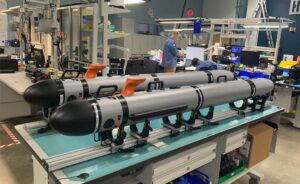 Unmanned Systems
Unmanned SystemsHII Delivers Navy’s First Lionfish UUVs
HII on Monday said it delivered the first two Lionfish small uncrewed undersea vehicles (SUUV) to the Navy under a contract that could reach up to 200 vehicles. Lionfish is […]
Tagged in:
